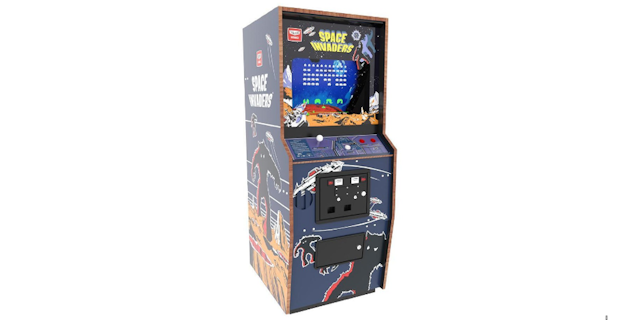In-Game advertising: the future is here
Truth is, little has changed since the first video arcade games of the very early '70s of the last century. That decade marked the first attempts at microtransactions: where users would play, get hooked, lose their life, and keep tossing in the coins… I can’t tell you how much money I wasted and frittered away with nothing left for ice cream or coke. I’d insist on keeping a game going at all costs. In fact, these days, when I go to the occasional arcade with my grandkids, I get sucked right back in as they do. Only I know enough, now, to keep some change for a treat.

Anzu reflect on the changing nature of the gaming industry.
To give you some perspective on this, a game called Space Invaders, produced by Taito, once caused a shortage of 100 yen coins in Japan. Four years later, the game had grossed $2 billion in quarters (almost $8 billion today). That’s a crazy amount of quarters!

In Demand Toys
Next came computer games and consoles, another whole article for future writing and sharing. The retail market exploded with the Gaming Store becoming a social and educational center for players.
And then came downloadable games and more ways of employing microtransactions: games as service, or buy a game and get updates or extra content or features as paid add-ons. And of course, the vaunted Freemium: get the game for free and then drive hundreds of millions of dollars in monthly revenue (expense to you) as players buy “battle passes” and customize their experiences with micro-transacted purchases.

Fortnite: One of the most popular freemium games of all time. Credit: Essentially Sports
Where the excitement is
Yet, it's in-game advertising (IGA) where the real excitement is to be found. IGA is a pathway to reach otherwise elusive audiences, especially as social media takes a hit through boycotts and general advertiser distaste. More to the point: we are really in the infancy of IGA with room to grow, experiment, test, and experiment and test again.
Think about it this way--the first-ever radio advertisement ran a little less than 100 years ago this summer. Up until that time, songs or record labels paid for mentions. Commercial advertising as we know it in broadcast form began in earnest with 50 minutes of commercial time sold for $50 to a real-estate developer in Queens, NY. 100 years from now, they might be writing (or telepathing) about what you did this summer if you get with the IGA program.
How it works in a nutshell
Some IGA needs to be hardcoded into the game and can manifest as a billboard or similar to a product placement in movies and shows. It can be interactive and will be viewed as an integral and necessary part of the game.
Then there is IGA that is video-based and pops, often annoyingly, to offer you “free” playing time or extra features after you realized that you already spent $200 on Angry Birds the day before.
There is also IGA that can be dynamically integrated “live” into a game, a tactic used by the Obama campaign in 2008 to deploy billboards in 10 swing vote states through Xbox and their gaming catalog.
Most excitingly, however, is dynamic IGA, a fairly recent addition to the mix that becomes a part of the story and native to the playing field. This is my favorite form of IGA, one that opens up a myriad of opportunities for off-line expansion, merchandising, and brand experiences linked to purchase. And because it is dynamically linked to the game, you can plan promotions, change messaging and images, and update in real-time.
And I haven’t even begun to discuss the esports sponsorships and tournament opportunities linked to dynamic IGA.
Will you be part of the evolution or stay stuck in the Stone Age?
Bottom line: through the ages, we have managed to monetize every form of storytelling and ultimately evolve, morph, empower, and develop our storytelling power. This has brought humanity (and advertising along with it!) to where we are today--an unprecedented interactive, trackable, personalized, brand-safe format.
As gaming gets ever more real, as the stories get more enticing, as the role-playing gets more personal, and as the storyline becomes ever more interactive…as social media becomes more problematic…dynamic insertion of your brand into the universe created by gaming developers - the Bards of today - is no longer an option. It is imperative. It is a must.
To be continued.
David Sable, senior marketing executive and advisor at Anzu.
Content by The Drum Network member:

Anzu
Anzu is the most advanced in-game ad solution for mobile, PC, console, and Roblox. Anzu’s in-game ads put players first and help advertisers reach audiences programmatically in a non-disruptive and highly engaging way. A patented 3D ad tracking engine, the first to bring viewability measurement in-game with Oracle Moat, and partnerships with trusted AdTech vendors make Anzu the preferred in-game advertising partner for advertisers worldwide.
Find out more